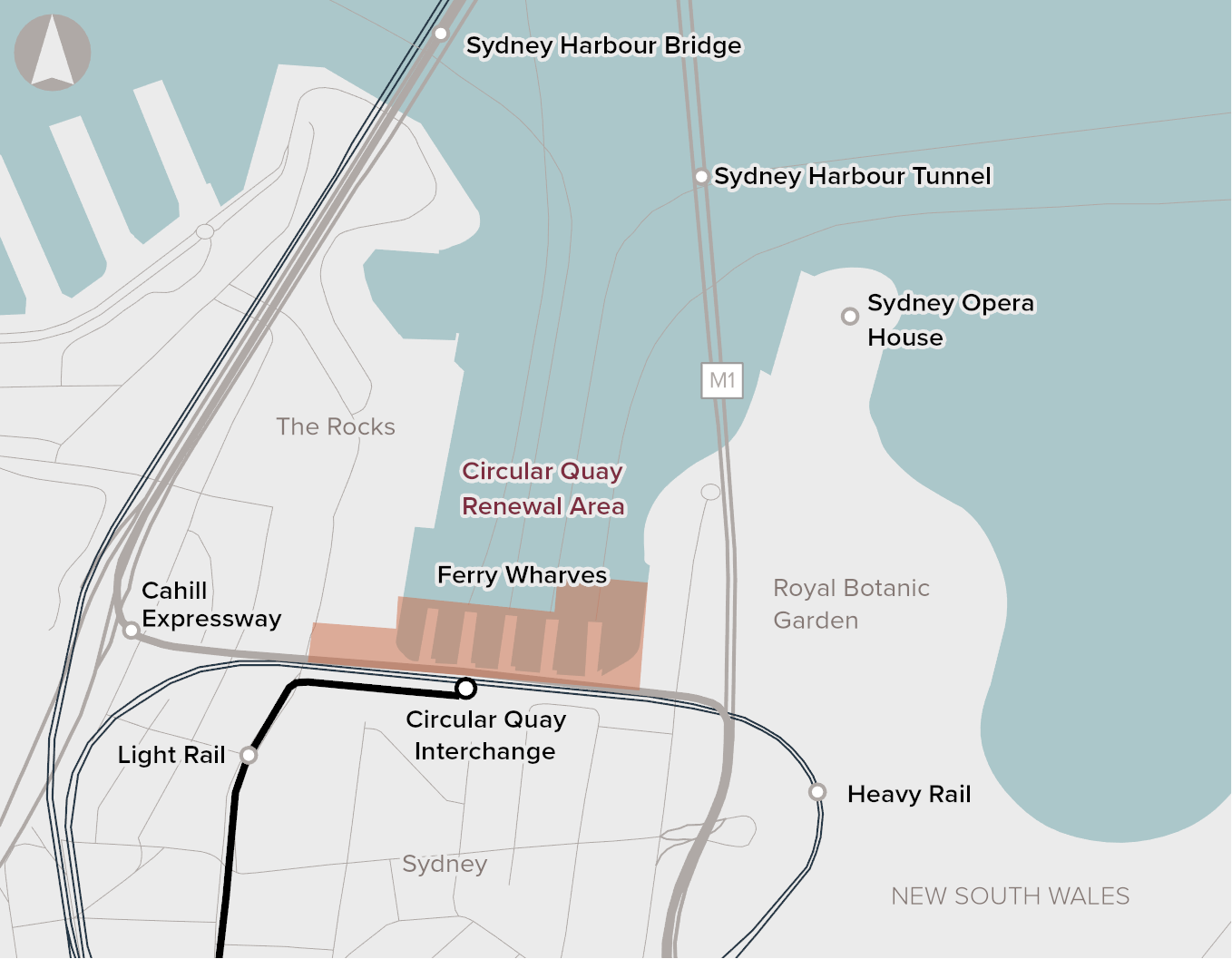Circular Quay Renewal


Circular Quay is one of Australia’s most recognisable and historic places. It is a popular gateway to many of Sydney’s cultural and historical sites and is one of Sydney’s most important public transport interchanges and public spaces. Circular Quay attracted 11.2 million domestic and 5.0 million international visitors in 2019, making it one of Australia’s most significant visitor destinations.
Despite Circular Quay’s strategic importance, the transport infrastructure is deteriorating, with the wharves and promenade approaching their end of life. Amenity is poor and public spaces are disjointed and managed by multiple parties. This has resulted in safety concerns, poor accessibility, a diminishing visitor experience, poor conservation of heritage assets and limited acknowledgement of the historical and cultural significance of the area.
The Circular Quay Renewal proposal seeks to update the transport infrastructure and amenities, enhance and activate public spaces, improve retail offerings and increase awareness of and exposure to heritage assets and First Nations cultures and history.
The proposal will deliver new wharves, an upgraded Circular Quay Station, 14,500m2 of additional public space as well as improvements to existing public space, new and refurbished built form across three levels of the east and west station, conservation of heritage items and views to highlight the cultural and historical significance of the renewal area, and a program of major events and activations incorporated as part of the ongoing operations of the proposal.
Strategic Fit
The proposal demonstrates alignment with local and state government strategies and priorities, and embeds a place-based, holistic approach to investment that activates the broader precinct. The proposal is consistent with the 2021 Australian Infrastructure Plan which identified the need to embed a place-based approach as a key area for reform.
Societal Impact
The proposal will primarily improve the amenity for visitors to Circular Quay.
This includes amenity improvements to transport infrastructure and public spaces. The proponent's business cases states that the net present value of the proposal is estimated at $292 million with a benefit-cost ratio of 1.38, indicating that it is likely to deliver net economic benefits to society (using a 7% real discount rate and a P50 capital cost estimate).
Deliverability
The proponent has experience delivering similar transport and place-based projects. The involvement of an industry partner via a Public Private Partnership procurement model adds additional market-led expertise and capability. To ensure the full range of the proposal’s benefits can be realised, careful execution of the procurement model and contractual arrangements will be required.
The proponent and the proposal’s industry partner are continuing to develop the planning and design of the proposal with the view of receiving approval and progressing to delivery in 2025 (subject to State and Australian Government funding approval).
Engagement with stakeholders in the community on the proposal and planned design, and monitoring and management of industry-wide market capacity pressures, will be critical in ensuring the project is delivered successfully.
Refer to Infrastructure Glossary for terms and definitions.